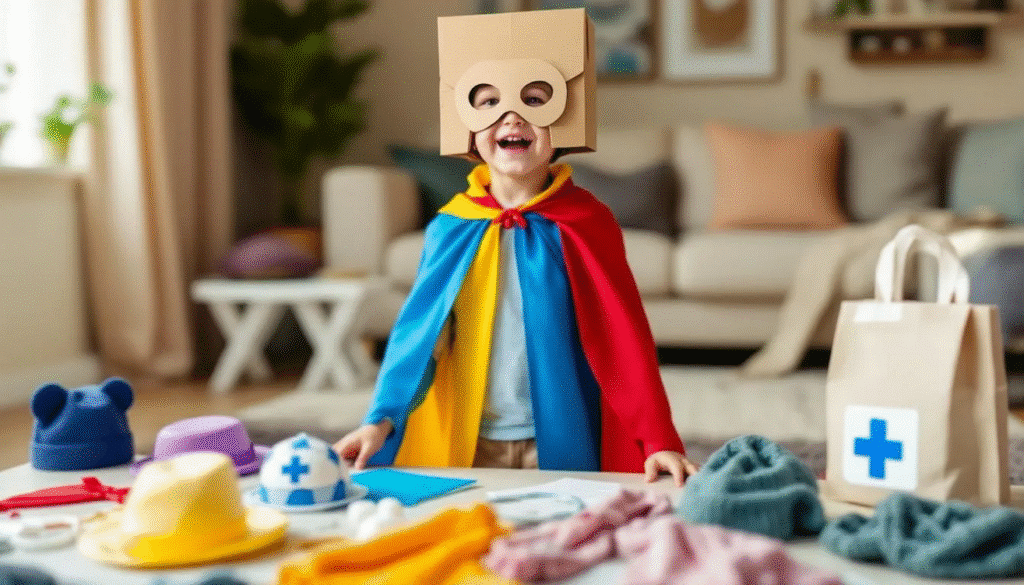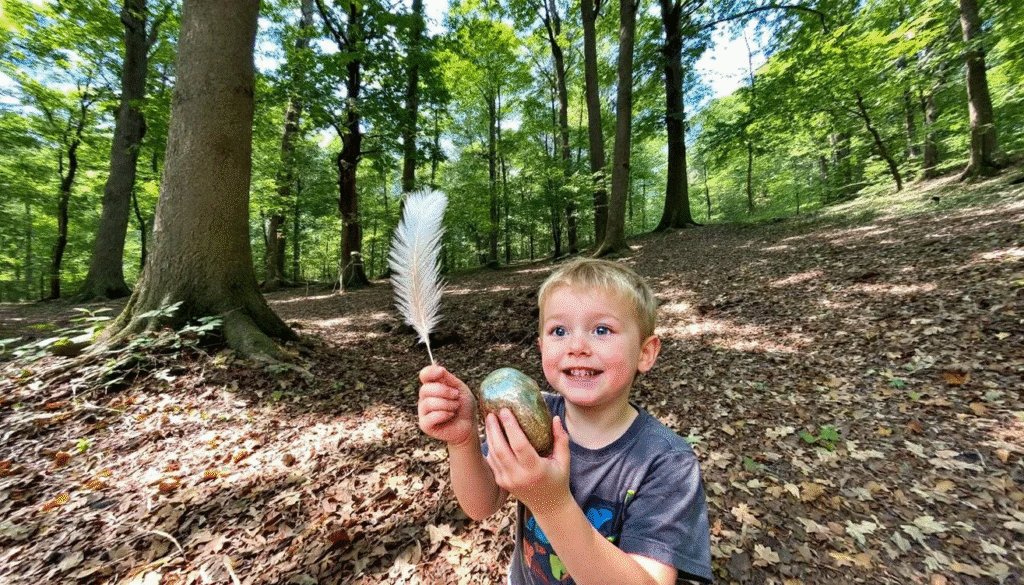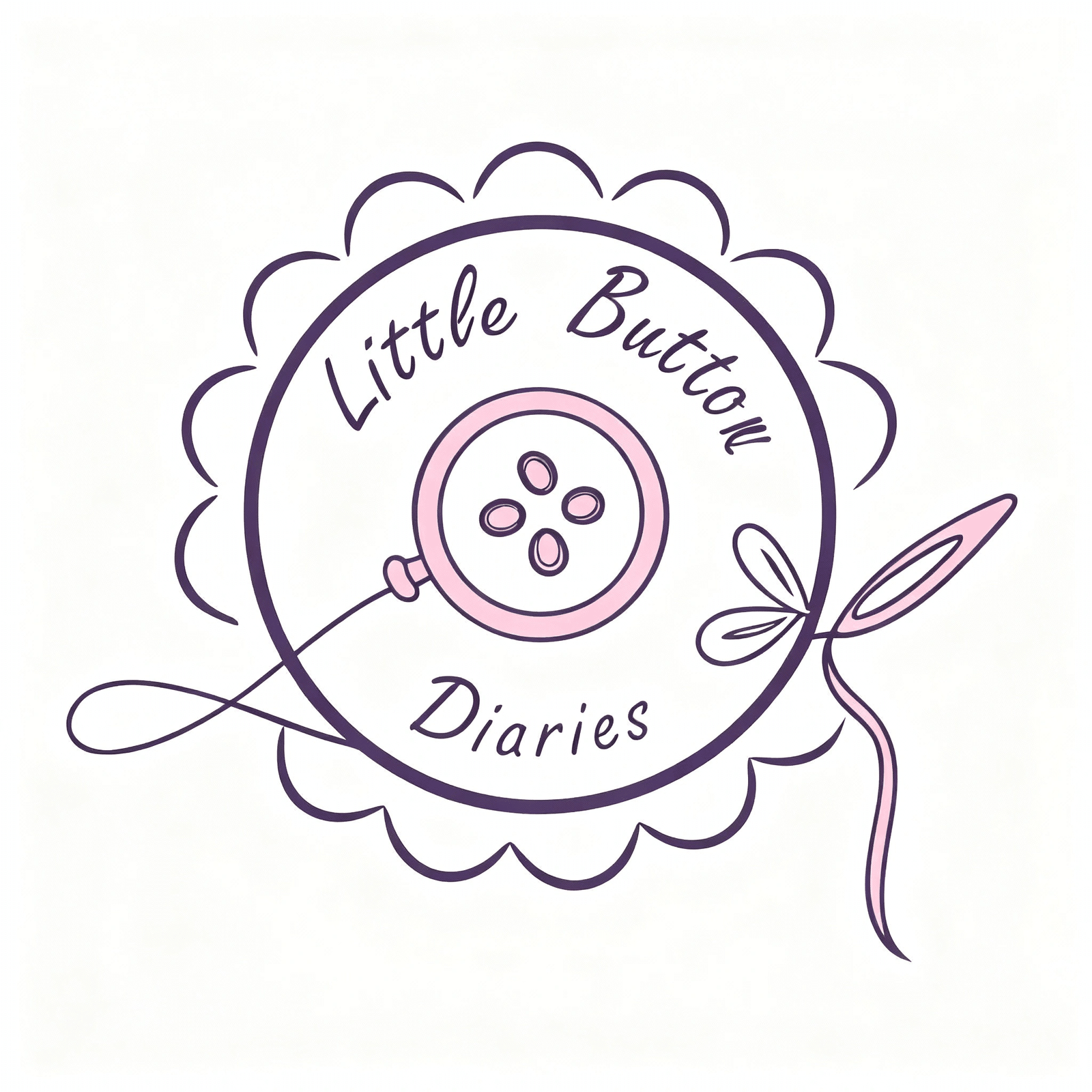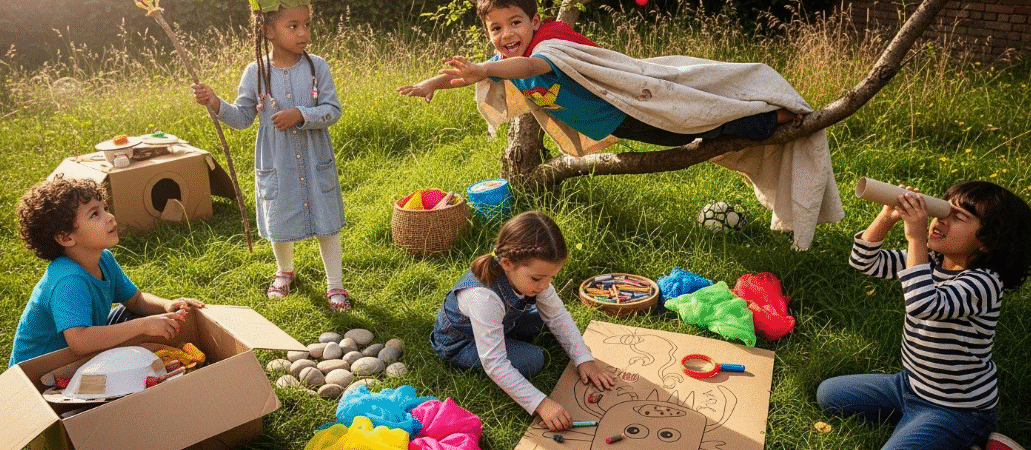When it comes to kids, activities for imagination are the spark that lights up their creativity, and creative activities are engaging ways to inspire children. Getting children to imagine, create, and play helps them think in new ways and solve problems better. It’s not just about fun; it’s about helping them grow their brain power and confidence by accomplishing creative tasks and feeling a sense of achievement. Limiting excessive screen time is also important, as it can hinder imagination and creativity. I’ll share some easy and fun ideas you can try with your child to bring out their imagination and make creative thinking a regular part of their day.
- Why Imagination Matters
- Let's Talk About Imaginative Play
- 1. Dress-Up Time: Becoming Someone New
- 2. Build a Fort: Making Their Own Secret Hideaway
- 3. Storytelling Adventures: Making Up Tales Together
- 4. Nature Scavenger Hunt: Discovering Stories in the Great Outdoors
- 5. Playdough Creations: Bringing Their Ideas to Life
- 6. Homemade Instruments: Making Music Magic
- 7. Puppet Shows: Bringing Stories to Life on Stage
- 8. Sensory Bins: Exploring Textures and Imagining Worlds
- 9. Shadow Play: Bringing Light to Life and Spinning Stories
- 10. Unstructured Play Time: Let Loose & See Where it Takes You
- How Parents Can Help Out
- Everyday Life Is Full of Creative Moments
- The Benefits of Letting Imagination Run Free
- Wrapping Up
Why Imagination Matters

Imagination is like a muscle that’s got to be exercised to get stronger. When kids use their imagination, they’re not just making up stories from scratch, they’re learning how to think in new ways and see possibilities that they wouldn’t normally see, which supports a child’s creativity. Open-ended questions encourage children to think creatively, helping them explore new ideas and possibilities. That sort of thinking will serve them super well in school, with their friends, and later on in life when they’re faced with tricky problems. Plus, it gives them a great way to express their feelings and ideas, and through these imaginative activities, children learn important skills.
Let’s Talk About Imaginative Play
Imaginative play is where the magic happens – where kids get to dress up, pretend, and turn everyday stuff into whole new worlds. Creative play is an essential part of fostering imagination, encouraging children to explore, invent, and express themselves freely.
It’s one of the best ways to get their creativity juices flowing because it lets them try out different roles and solve little problems along the way. The process of imaginative play involves experimentation, problem-solving, and iterative thinking, helping children develop independence and critical thinking skills. Having a dedicated imaginative play area at home can further encourage role-playing and provide a space for children to fully immerse themselves in creative activities.
Whether they’re pirates sailing the seven seas or chefs whipping up a storm in the kitchen, they’re learning to think on their feet and come up with fresh ideas. Unexpected things are always happening during creative play, providing valuable learning experiences and opportunities for growth.
1. Dress-Up Time: Becoming Someone New

One simple way to get imagination going is to just have some dress-up clothes handy. It doesn’t have to be a fancy costume – old hats, scarves, and cardboard boxes can turn your kid into a superhero, a doctor, or a space explorer, letting them explore the world from a character’s point of view. The most important thing is to let them decide who they want to be and what story they want to tell. They’ll amaze you with how creative they can get with just a few simple things. Painting, drawing, and coloring are also classic ways to express creativity, allowing children to bring their imaginative ideas to life through art. Make believe helps children differentiate between reality and fiction while developing creativity.
2. Build a Fort: Making Their Own Secret Hideaway
Building a fort with blankets, pillows, and chairs is more than just a fun afternoon – using simple materials and everyday objects sparks creativity and resourcefulness. It’s a chance for your kid to plan, build, and create their very own private world. They can decide if it’s a castle, a spaceship, or a jungle hideout. You can join in on the fun by reading stories inside or having a snack party. The fort becomes a space where their ideas come alive, and they get to practice teamwork and problem-solving with you.
3. Storytelling Adventures: Making Up Tales Together
Telling stories together is a fantastic way to really get that imagination fired up and helps develop your child’s ideas and creativity. Just start with a simple sentence like, “Once upon a time, there was a talking dog…” and then your child can add the next bit. You can take turns adding characters, places, and funny twists. If your child likes to draw, they can sketch scenes from the story, which helps bring their ideas to life in a whole new way. Story stones painted with characters and settings can also be used to help children tell imaginative tales, adding a tactile and visual element to storytelling. Encourage your child to write their own stories or create a picture book based on their ideas, turning storytelling into a fun way to express and develop their imagination.
4. Nature Scavenger Hunt: Discovering Stories in the Great Outdoors

Get outside with a list of things to find – like a shiny rock, a feather, or a funny-shaped leaf. As you explore, encourage your child to notice different things in nature and imagine stories about what they find. Maybe that rock is a treasure from a pirate ship, or the feather belongs to a magical bird. This activity mixes real-world discovery with creative thinking. It sparks curiosity and wonder in children, making the outdoors a playground for their imagination.
5. Playdough Creations: Bringing Their Ideas to Life
Playdough is a fantastic tool for hands-on creativity. Give your child different colors and some tools like cookie cutters or sticks, and let them sculpt whatever comes to mind, enjoying the process of creating new things from scratch. They might make animals, food, or something totally new. This kind of play helps kids think in 3D and express their ideas in a really hands-on way.
6. Homemade Instruments: Making Music Magic
Making simple instruments from household items is a blast for kids. For example, a box with rubber bands becomes a guitar, or a tin with beans turns into a shaker. Once the instruments are ready, you can have a jam session, encouraging your child to experiment with sounds and rhythms. Use art supplies to decorate the instruments, making them unique and colorful, and then have a dance party to enjoy the music together. This helps them develop a sense of rhythm and boosts their confidence in trying new things.
7. Puppet Shows: Bringing Stories to Life on Stage
Using socks, paper bags, or small toys, your child can create puppet characters and put on a show. This activity encourages them to invent stories, voices, and actions – all while having a blast with you. You can help by making a simple puppet stage from a cardboard box. Puppet shows are great for building language skills and letting kids practice sharing their ideas in front of others. Performing puppet shows also gives children a safe way to express emotions like fear and helps them experience success in confidently expressing themselves.
8. Sensory Bins: Exploring Textures and Imagining Worlds
Fill a box with rice, beans, sand, or water beads, and add small toys or objects—sensory bins are fun activities suitable for children of all ages. Sensory bins invite kids to explore textures while imagining stories about the items inside. For example, toy animals in a rice bin might be on a safari adventure. This kind of play is really calming and helps kids focus while sparking their creativity.
9. Shadow Play: Bringing Light to Life and Spinning Stories
Grab a flashlight and some toys or cut out shapes to make some shadows on the wall, or try drawing your own unique shadow shapes to use. Your little one can move the objects around and tell all sorts of stories or create new characters. Shadow play is a great way to get kids thinking about shapes, sizes and movement in a fun way that really gets the imagination going. Shadow play also helps children expand their imaginations by encouraging creative exploration and storytelling.
10. Unstructured Play Time: Let Loose & See Where it Takes You
Sometimes the best way to get imagination flowing is to simply let kids play without any of the usual rules or plans, highlighting the importance of playing freely to encourage creativity and exploration. Turn them loose with whatever toys and materials they like and see what kind of games and stories they come up with. This kind of open-ended play lets them dream up their own adventures and builds their ability to think creatively without worrying about getting things ‘right’. Creative play has no specific goals and also helps relieve stress for children, making it an essential part of their development. The difference between open-ended creative play and more structured activities is that creative play focuses on exploration and imagination without specific goals, while structured activities often require practice, responsibility, and commitment.
How Parents Can Help Out
You don’t need to be an expert or have all the fancy toys to support your child’s imagination either. Family involvement in creative activities is key—engage together, look at family photos, or invite siblings and relatives to join in play.
Just be interested in what they’re coming up with – ask them questions like “What happens next?” or “How did you think of that?” and show them that you value what they’re coming up with. Asking your child open-ended questions can stimulate their imagination, encouraging them to think deeply and creatively. And even better, create a space where they feel safe to try new things and make mistakes – that’s where all the real learning happens! By observing and participating, parents can gain valuable insights into their child’s creative process and development.
Everyday Life Is Full of Creative Moments
Imagination isn’t just for playtime, – its for all the time! Through creative activities, children learn to distinguish between imagination and reality, developing important cognitive skills. You can turn everyday things like cooking, cleaning or going for a walk into a creative experience. Try cooking with your child and say “okay, you’re a chef, what’s the new recipe you’re going to make?” or while you’re out for a walk, say “lets pretend we’re explorers and we’ve just discovered a new land – what do you see?” During these creative moments, important developmental milestones often happen as children grow and learn.
The Benefits of Letting Imagination Run Free
When kids use their imagination, they start to develop all sorts of useful skills – nurturing a child’s imagination supports their overall development by encouraging creativity, cognitive growth, and life skills. They get better at solving problems, understanding how other people feel and expressing themselves. Imaginative play even helps reduce stress and makes learning a more enjoyable experience – plus it’s just plain fun.
Wrapping Up
Encouraging your child’s imagination is actually pretty easy – creative activities benefit both children and adults by fostering creativity and mental imagery – just be willing to get messy sometimes and not worry too much about making a tidy mess. It’s also important to let children relax and enjoy unstructured, imaginative play, giving them time to unwind and explore freely. With a bit of effort and some simple activities you can help your child develop the creative thinking that will serve them for the rest of their lives. So go grab some everyday stuff, clear a little space and watch your child’s creativity take off – it’s one of the best things you can give them!

